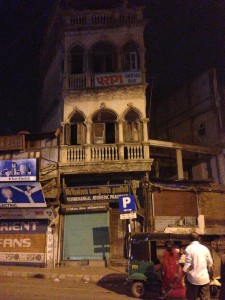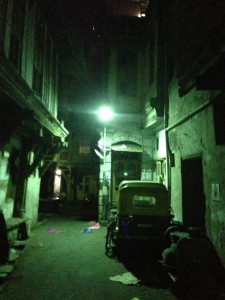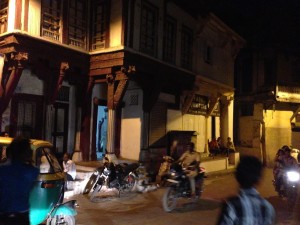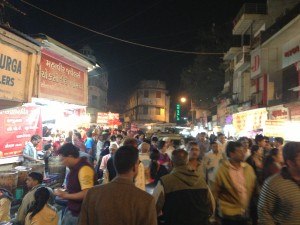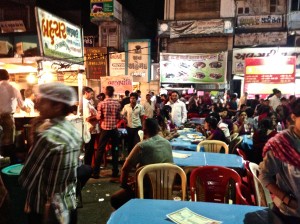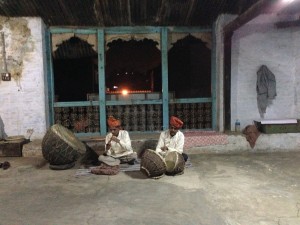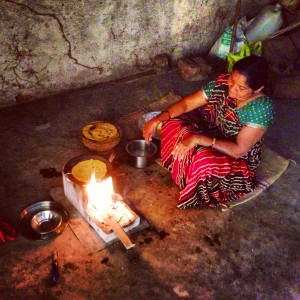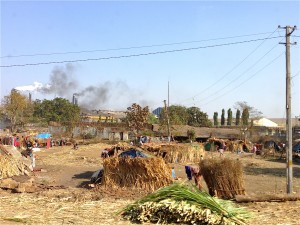
In Gujarat Videapeth, a university founded by Mohatma Gandhi under the principles of ahimsa and satyagraha to encourage education, run by Indians for Indians free from the governing control of British colonialism, one of the students called Narendra Modi, a Gandhian, follows the principles of the father of Indian nation. During our research in Gujarat it became obvious that Modi seeks to establish a comparison between his own figure and the figure of Gandhi. Modi’s desire for Gandhi’s fame is apparent at the Commercial Tax Circle, one of the central squares in Ahmedabad, where the iconic Gandhi statue is located. A symbol of the nation looks on his fellow compatriots from a concrete pedestal at one of the busiest and most vibrant squares of Ahmedabad. Chief Minister Modi became a new symbol of a Gujarat, and placed his image right next to Gandhi. Modi’s desire to be the next Gandhi (or one next to Gandhi) is obvious; however, I would argue that Modi seeks Gandhian fame, but he is not following Gandhian principles. Their ideology are incomparable; Modi’s Hindutva is fascist, and the slogan “one nation, one language, and one religion” could be compared to the most brutal ideology in the world, like Ku Klux Klan in America or Stalinism in Russia. This is the ideology that killed Gandhi, as people wanted a Hindu-nation state. And Narendra Modi wantsto symbolically kill Gandhi in Gujarat again.
However, there are people that devoted their lives to the fight with Modi for justice and peace, working for the poor and marginalized. One of them is Fr. Cedric Prakash sj, he is the director of Prashant, an Ahmedabad-based Jesuit Center for Human Rights, Justice and Peace. We were fortunate to have Prashant center that was co-hosting with the Centre for Conflict Studies our group in Gujarat. The organization was found on October 2, 2001, which is the international day of non-violence, and birthday of Gandhi. Father Cedric’s life is devoted, in his own words to “be a bridge between people and focus on what unites us in order to find commonalities with other people and other faiths,” and he carries his mission with happiness and joy. For me every time conversing with Fr. Cedric was a delightful and eye-opening experience, when the pearls of wisdoms are mixed with humor and unique experience that Fr. Cedric has. In these conversations I understood that a fight for human rights is not something romantic, or ad hoc, quite the opposite, it is an tiring routine work, when you sometimes have to take three steps back in order to make a small step forward. Everyday Prashant monitors, documents and highlights violations that are taking place in the state of Gujarat and India. Moreover, Fr. Cedric and hiscolleagues are fighting for justice for the 2002 victims in in the High Court of Gujarat and also in the Supreme Court. Besides these activities you can see Fr. Cedric giving interviews in the morning, helping sisters at the House for Dying and Destitute during the day, travelling to a conference in Delhi, writing a new article in a magazine or playing with kids in one of the Jesuit missions. For me Fr. Cedric is an example of a real Gandhian, a person who is not afraid to stand up against those who are in power (it does not matter wether it is colonial Britain or brutal Modi’s regime), a person who devoted his life to protecting and standing up for each and every person in need, for the marginalized and oppressed, a person who carries his mission with joy and happiness.


